Black History Month Poetry Lesson Plans
15 Things About Black History Month You Didn't Learn in School
From the first African American to fly across the country to the first Black presidential candidate, there's a lot you don't know about Black History Month.
Every editorial product is independently selected, though we may be compensated or receive an affiliate commission if you buy something through our links. Ratings and prices are accurate and items are in stock as of time of publication.
 AP/Shutterstock
AP/Shutterstock
Why Black History Month is celebrated in February
Every year in February we celebrate the contributions of Black Americans as part of Black History Month, but even so, there are many groundbreaking people, places, and events whose legacy has been overlooked or forgotten. Black History Month as we know it today grew out of "Negro History Week," which first took place in 1926 in the second week of February (to align with Abraham Lincoln and Frederick Douglass' birthdays, on the 12th and 14th respectively). The week-long celebration was spearheaded by Harvard-educated Black historian Carter G. Woodson, who wrote a book in 1916 detailing the overlooked contributions of African Americans in America, titled The Journal of Negro History. In 1976, President Ford finally declared February Black History Month, urging Americans to "seize the opportunity to honor the too-often neglected accomplishments of Black Americans in every area of endeavor throughout our history." These facts to celebrate Black History Month deserve to be remembered every month of the year.
ⓘ
 Sundry Photography/Getty Images
Sundry Photography/Getty Images
Black History Month has a different theme every year
Since its official inception in 1976, Black History Month has grown to become an event celebrated by cultural institutions such as theaters, libraries, and museums, as well as by corporations like Google and Target. Social media companies such as Instagram also participate, through initiatives such as their 2019 #CelebrateBlackCreatives program. Every year, the Association for the Study of African American Life and History (ASALH) chooses a theme around which to center their Black History Month celebrations. Last year's theme, "African Americans and the Vote," marked the centennial of the Nineteenth Amendment (granting women the right to vote), as well as the 150-year anniversary of the Fifteenth Amendment, which granted Black men the right to vote. The theme for 2021 is "The Black Family: Representation, Identity, and Diversity." This theme explores both the African diaspora and the spread of Black families across the United States. This is why Black History Month shouldn't be just one month.
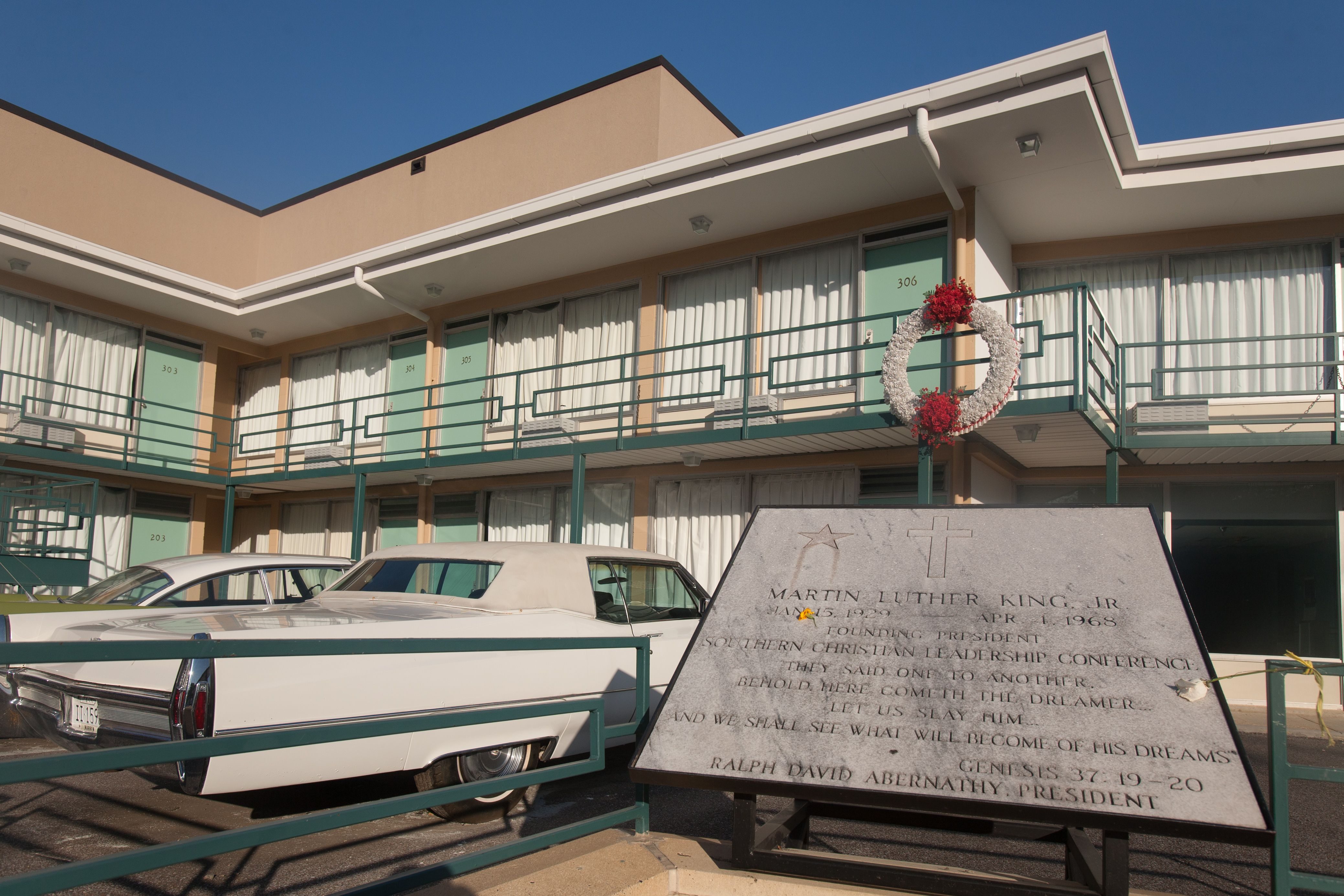 Erik Pendzich/Shutterstock
Erik Pendzich/Shutterstock
The National Civil Rights Museum is in a somber location
Everyone should visit the National Civil Rights Museum in Memphis, Tennessee; it's an immersive experience, steeped in history and emotion. And it's not only the artifacts the museum houses that are notable. The museum itself is located on the former site of the Lorraine Motel where Martin Luther King Jr. was tragically assassinated on April 4, 1968. The facade is still there to remind visitors of what happened that day. Noelle Trent, PhD, director of interpretations, collections, and education at the museum tells Reader's Digest, "The preservation of historic sites, especially the Lorraine Motel, is important because the physical structures, space, and geography interpret history in a manner that can not be expressed by words or photographs. There is power in a place." Don't miss these 14 rarely seen photos of Martin Luther King, Jr.
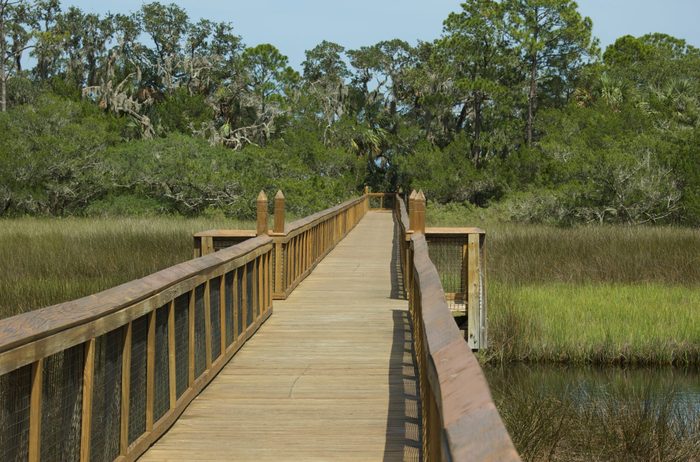 QualityImagePro/Shutterstock
QualityImagePro/Shutterstock
The importance of Fort Mose
Of all the cities you learned about in school that no longer exist, Fort Mose (pronounced "Mo-say") is one of the most important. More than 250 years ago when people who had escaped their enslavement made their way to St. Augustine, Florida, the oldest continuously inhabited city in America, they were welcomed by the Spanish, who valued their skills and contributions. In 1738, the governor rewarded them by establishing the town that went on to become known as Fort Mose. It was the first officially sanctioned town for freed Black men in what is now the United States, with a population of about 100. In 1763 the Fort was ceded to the British under the Treaty of Paris, and the free Black residents were evacuated to Cuba with the Spanish. The British then destroyed the site during the War of 1812. Today, it is a Historic State Park. These wonderful American landmarks celebrate Black culture.
 Fotosearch/Getty Images
Fotosearch/Getty Images
James McCune Smith was the first African American doctor
James McCune Smith was the first African American to hold a medical degree and the first African American to run a pharmacy. Because no American university was willing to admit him, he was forced to travel to Scotland to earn his degree from the University of Glasgow. After graduating in 1837, he practiced medicine for nearly two decades at the Colored Orphan Asylum in Manhattan, contributed papers to scholarly journals, and was widely respected as an intellectual. He was an abolitionist who helped enslaved peoples escape and find their way to freedom via the Underground Railroad. Despite his accomplishments, Smith was never admitted into the American Medical Association. This is why desegregation didn't put an end to racism in America.
 Everett Collection/Shutterstock
Everett Collection/Shutterstock
Students had a big impact on the Civil Rights Movement
When we think of the heroes of the Civil Rights Movement, we usually think of towering figures like Rosa Parks and Martin Luther King Jr. but the movement was also comprised of ordinary young people who wanted to change the world by fighting injustice. "Young people have been critical actors in the fight for civil rights in the United States," Trent shares. "From the Student Nonviolent Coordinating Committee to the Congress for Racial Equality's Freedom Riders to 1964 Freedom Summer's Council of Federated Organizations, youths were participants and leaders in key protest movements. They leveraged their innovative techniques to work within the community to challenge the status quo." These "facts" about the Civil Rights Movement aren't actually true.
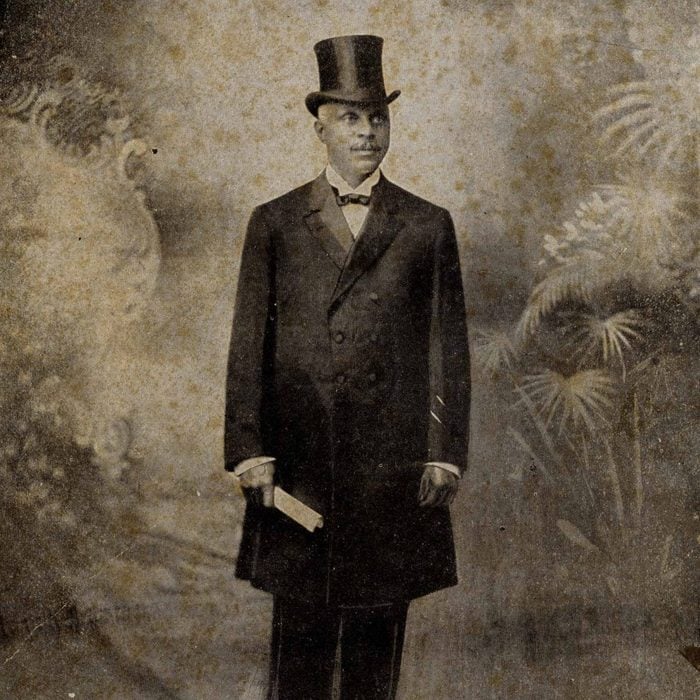 Courtesy University of North Florida
Courtesy University of North Florida
George Edwin Taylor ran for president in 1904
Long before Barack Obama became the first Black president of the United States, George Edwin Taylor ran for president as a member of the National Negro Liberty Party in 1904. Though the journalist and a newspaper editor received only 2,000 votes, Taylor deserves to be remembered for his groundbreaking political run. From voter suppression to lack of representation, Black people are still being shut out of America's political processes.
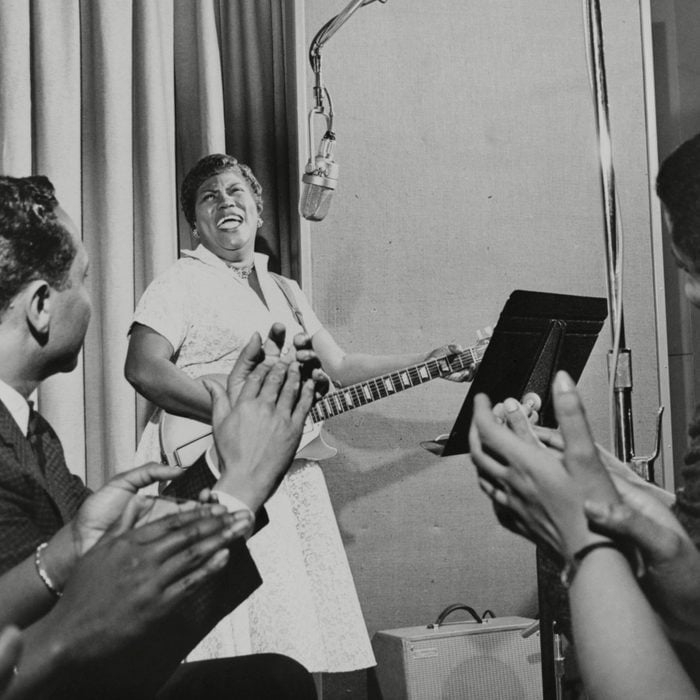 Everett Collection/Shutterstock
Everett Collection/Shutterstock
Sister Rosetta Tharpe knew how to rock
When it comes to rock 'n' roll, the boys seem to get all the credit but Sister Rosetta Tharpe was known as the "Godmother of Rock 'n' Roll" for a reason. Born in 1915, Tharpe blazed a musical trail with her distinctive voice and rollicking guitar, combining both secular and spiritual music in her own unique brand of rock 'n' roll. Such greats as Chuck Berry, Elvis Presley, Bob Dylan, and Johnny Cash have all credited her influence on their music. Learn about these other amazing Black Americans you weren't taught about in school.
 AP/Shutterstock
AP/Shutterstock
Pioneering Olympian and activist Wilma Rudolph
Wilma Rudolph was an African American athlete who became the first woman to win three medals at the Summer Olympics in 1960. Having achieved her dream, she returned home and refused to participate in a celebratory parade if it was segregated. As a result, the parade and banquet thrown in her honor were the first events to be integrated in her hometown of Clarksville, Tennessee. Sports have long provided an important platform for activism for racial equality. Learn the history behind the clenched fist and how it became a black power symbol.
 Bettmann/Getty Images
Bettmann/Getty Images
James Banning's inspiring achievement
You've probably heard of Charles Lindbergh and Amelia Earhart, but the name James Banning deserves to be right up there with them. Accompanied by Thomas Allen, Banning's history-making flight departed from Los Angeles on September 18th, 1932, and landed in Long Island, New York on October 9th, 1932, making Allen and Banning the first African Americans to fly across the country. Unfortunately, Banning was killed in a plane crash at an air show just three months later. Tragically, his death occurred because of racial prejudice: Because he was Black, Banning was not allowed to pilot the plane despite his years of experience and was instead a passenger in a craft piloted by a less experienced pilot from the San Diego Naval Air Station. This is what it's like to be one of the few Black pilots in the world.
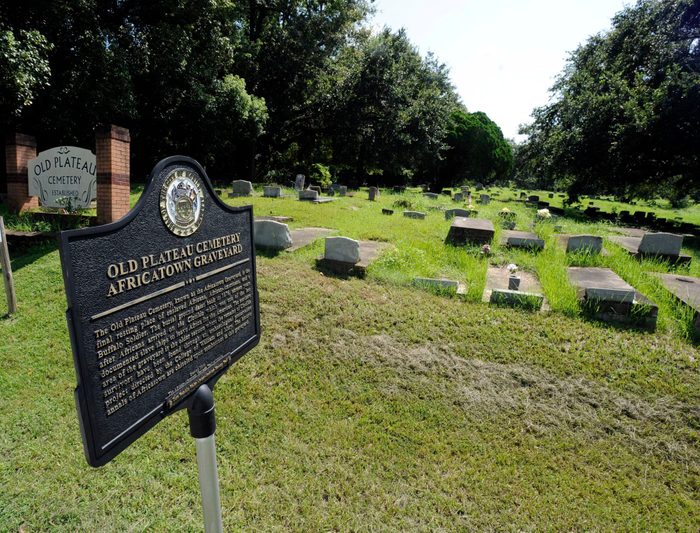 Jay Reeves/AP/Shutterstock
Jay Reeves/AP/Shutterstock
The wreckage of America's last known slave ship was finally found
Although owning, buying, and selling enslaved peoples was still legal in 1860, the importation of the enslaved was a crime. However, one plantation owner, Timothy Meaher, bet that he would be able to sneak a new ship full of enslaved people into the country. That ship was the Clotilda, and as soon as it reached its destination the captain transferred his prisoners to a new boat and deliberately sank the ship to avoid detection. Descendants of the African people forcibly brought to America on the Clotilda are still resident in Africatown, which their ancestors founded after being freed by Union soldiers in 1865. They had originally attempted to return to Africa, but could not gather enough funds to do so. A full 159 years later, in 2019, it was announced that the wreckage of the Clotilda had been found in Alabama's Mobile River, validating their painful history in the historical record. Learn why Black History Month is more important than ever.
 Suzanne Cordeiro/Shutterstock
Suzanne Cordeiro/Shutterstock
Michelle Obama is so much more than a groundbreaking First Lady
Michelle Obama will go down in history as the first Black first lady, but her accomplishments don't begin or end there. Obama is a Harvard-educated lawyer, mom of two brilliant Black girls, and an author; her book, Becoming, was the best-selling book of 2018 and the second best-selling book of 2019. To soak up a little bit of her grace and wisdom, check out these inspiring quotes from Michelle Obama.
 Hedrich Blessing/Getty Images
Hedrich Blessing/Getty Images
The first public high school for African Americans opened in 1870
The first public high school for African Americans, Paul Laurence Dunbar High opened in Washington, D.C. in 1870, just five years after the end of the Civil War. Named after Dunbar, the acclaimed Black writer, the school graduated many luminaries including the first Black Army General, the first Black presidential cabinet member, and the first Black graduate of the Naval Academy. Many high schools, including Dunbar Vocational High School in Chicago (pictured above), have also adopted Dunbar's name. Bookmark this read on what anti-racism means and what it means to be anti-racist.
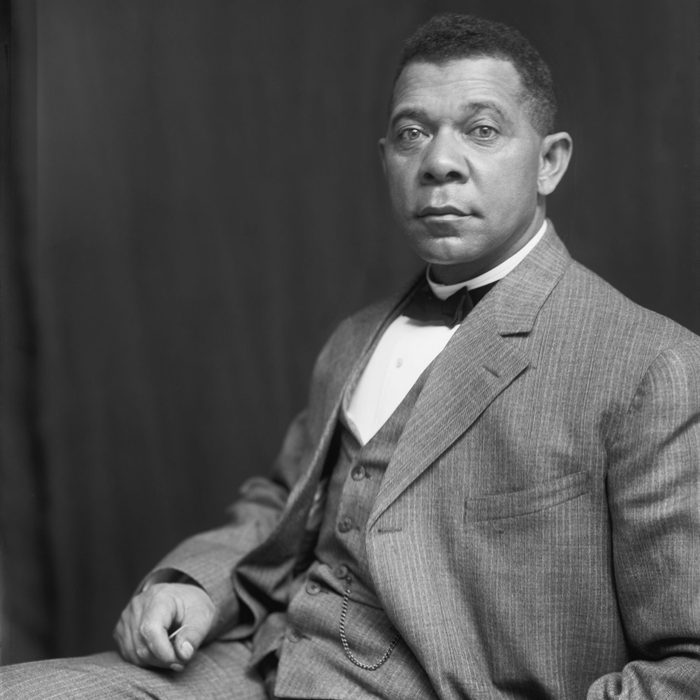 Glasshouse Images/Shutterstock
Glasshouse Images/Shutterstock
The first African American to dine at the White House feared for his life
In 1901, with segregation still in force, President Theodore Roosevelt invited educator Booker T. Washington, formerly enslaved, to dine with him and his family at the White House. News of the dinner led to outrage and even death threats for Washington. He later said he almost didn't accept the invitation, knowing it would be controversial, but he "felt compelled to accept on behalf of his entire race." Here are some small—but meaningful—ways to fight racism every day.
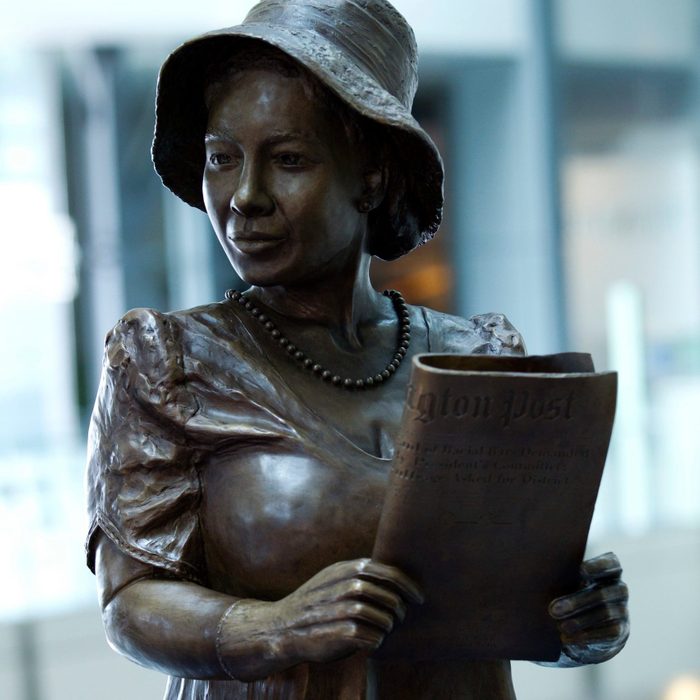 Jose Luis Magana/AP/Shutterstock
Jose Luis Magana/AP/Shutterstock
Alice Dunnigan was a hero of journalism
Born in 1906, Dunnigan was the first female African American White House correspondent in a time when the nation was still largely segregated. She endured many indignities, including going three years straight without President Dwight D. Eisenhower calling on her for a single question (probably due to her questions focusing on civil rights issues). The dry spell was broken when JFK called on her only eight minutes into his first press conference. In 1974, Dunnigan published a wonderful memoir,Alone atop the Hill, about her experiences in political journalism. Today, Dunnigan is considered a groundbreaker in the field of journalism. Next, learn why Black Americans celebrate Juneteenth (and why all Americans should, too).
Sources:
- Oprah Magazine: "The Reason Black History Month is in February"
- ASALH: "Black History Themes"
- National Civil Rights Museum: "Directory"
- Florida Museum: "Fort Mose"
- The University of Glasgow: "James McCune Smith"
- NPR: "A Forgotten Presidential Candidate from 1904"
- NPR: "Forebears: Sister Rosetta Tharpe, the Godmother of Rock 'n' Roll"
- Oklahoma Historical Society: "Banning, James Herman (1900-1933)"
- Smithsonian Magazine: "The 'Clotilda', the Last Known Slave Ship to Arrive in the U.S., is Found"
- NPR: "The Legacy of Dunbar High School"
- NPR: "Teddy Roosevelt's 'Shocking' Dinner with Washington"
- Nieman Reports: "Remembering Alice Dunnigan, a Pioneering Black Journalist"
Originally Published: February 01, 2021
Sign up for articles sent right to your inbox
Enjoy the best stories, advice & jokes delivered right to your inbox!

Subscribe & SAVE Save Up To 84%!
Black History Month Poetry Lesson Plans
Source: https://www.rd.com/list/facts-about-black-history-month-you-didnt-learn-in-school/
0 Response to "Black History Month Poetry Lesson Plans"
Post a Comment